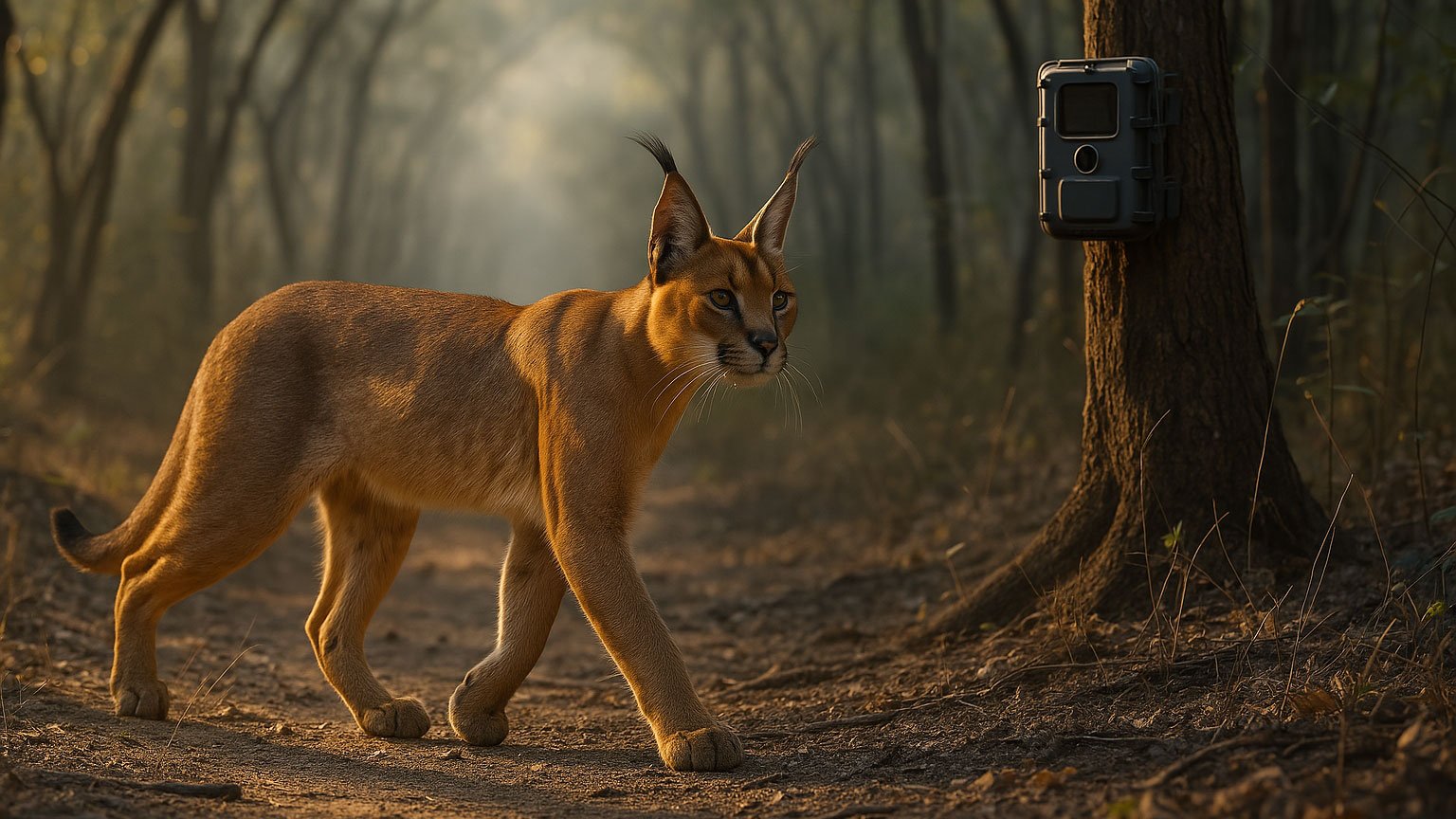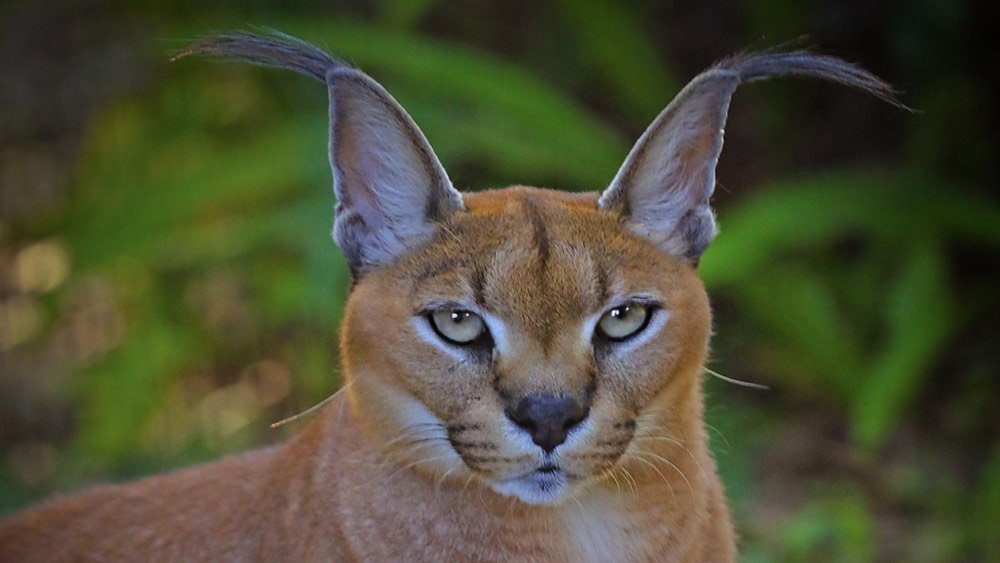Whispers in the Grass: The Return of the Caracal
Caracal TrailCam ChatGPT AI
In the golden light of dawn, the Mukundra Hills stir quietly. Trees sway gently, the air is heavy with the scent of earth and wildflowers, and a hidden drama unfolds on padded feet. Here, in a remote stretch of Rajasthan, India, a ghost has reappeared—a ghost that hasn’t been seen in two decades.
Captured by a trail camera that blinked silently in the dark, a pair of ears flicked into view—tipped in black tufts, erect, alert, and unmistakable. The camera clicked. And just like that, the caracal returned.
For 20 years, the caracal—a sleek, powerful, and almost mythical wildcat—had gone unseen in this part of India. Now, in an event hailed as “a matter of great joy,” researchers have photographic proof that the species still walks the Mukundra Hills Tiger Reserve. Conservationists erupted in celebration at the find, which marked the first-ever recording of the elusive feline in this protected area.
The Cat Who Vanished
Caracals are cats of contradiction. With bodies built for speed and power, and coats the color of desert dusk, they seem made for the spotlight. Yet few people have seen one in the wild. They're solitary, shy, and swift, never moving in groups larger than a pair. Their silent reclusiveness is part of what makes them so difficult to study—and so easy to lose track of.
Globally, the caracal is listed as “Least Concern” by the IUCN Red List. But that blanket status hides a local tragedy: in India and Pakistan, these beautiful cats are teetering on the brink of extinction. In India, only a few known adults remain.
Why the steep decline? Habitat destruction, human-wildlife conflict, and hunting for retaliation after livestock loss have devastated the species. In a world where wild spaces are being eaten alive by roads, farms, and settlements, the caracal has had fewer and fewer places to turn. It disappeared so quietly, few even noticed it was gone.
A Camera, a Click, a New Beginning
The recent rediscovery in Mukundra wasn’t the result of chance—it was the reward for years of patient effort and technology. Conservationists placed trail cameras strategically across the tiger reserve, hoping not just for tigers, but for the whispers of other wild lives too easily overlooked.
When those black-tufted ears appeared in a camera trap photo, it was more than a sighting. It was a message: “I’m still here.”
And that message couldn’t have come at a better time. Devvart Singh Hada, chairman of the Pagmark Foundation, called it “an encouraging sign for conservation efforts.” The sighting makes Mukundra the fourth of five tiger reserves in Rajasthan where the caracal has been spotted in recent months. This suggests that small populations may still be hanging on—hidden, but not yet lost.
More Than a Photograph
But a single photo is just the beginning. With the help of this new evidence, researchers hope to secure funding for more extensive studies. They aim to map out caracal populations, study their behaviors, and protect their remaining habitat. It's a race against time—but now, there's a sliver of hope to run with.
The value of trail cameras in modern conservation can’t be overstated. These silent sentinels have helped scientists rediscover elusive species around the globe—from black wolves in Poland to marbled cats in Assam. With every click of a shutter in the wilderness, they whisper back to us: “There is still magic here.”
A Call to Action
The return of the caracal is a fragile miracle, a rare second chance. It reminds us that extinction isn’t always final—sometimes, it’s reversible. But only if we act. Only if we protect the wild spaces left. Only if we honor the quiet creatures who ask for nothing but a place to live, unseen.
At Big Cat Rescue, our mission is to ensure that wild cats—whether in the jungles of India or the forests of the Americas—have a fighting chance. While we’ve transitioned from being a sanctuary to a global force for in-situ conservation, our work is more vital than ever.
You can help keep hope alive. Support the efforts to protect cats like the caracal—through education, sustainable choices, advocacy, and donations. Be the reason this ghost of the grasslands becomes a familiar part of the landscape once more.
Because when we save the caracal, we don’t just save a cat. We save the story of the wild.
Read more: https://www.yahoo.com/news/researchers-thrilled-trail-cameras-capture-104515751.html














